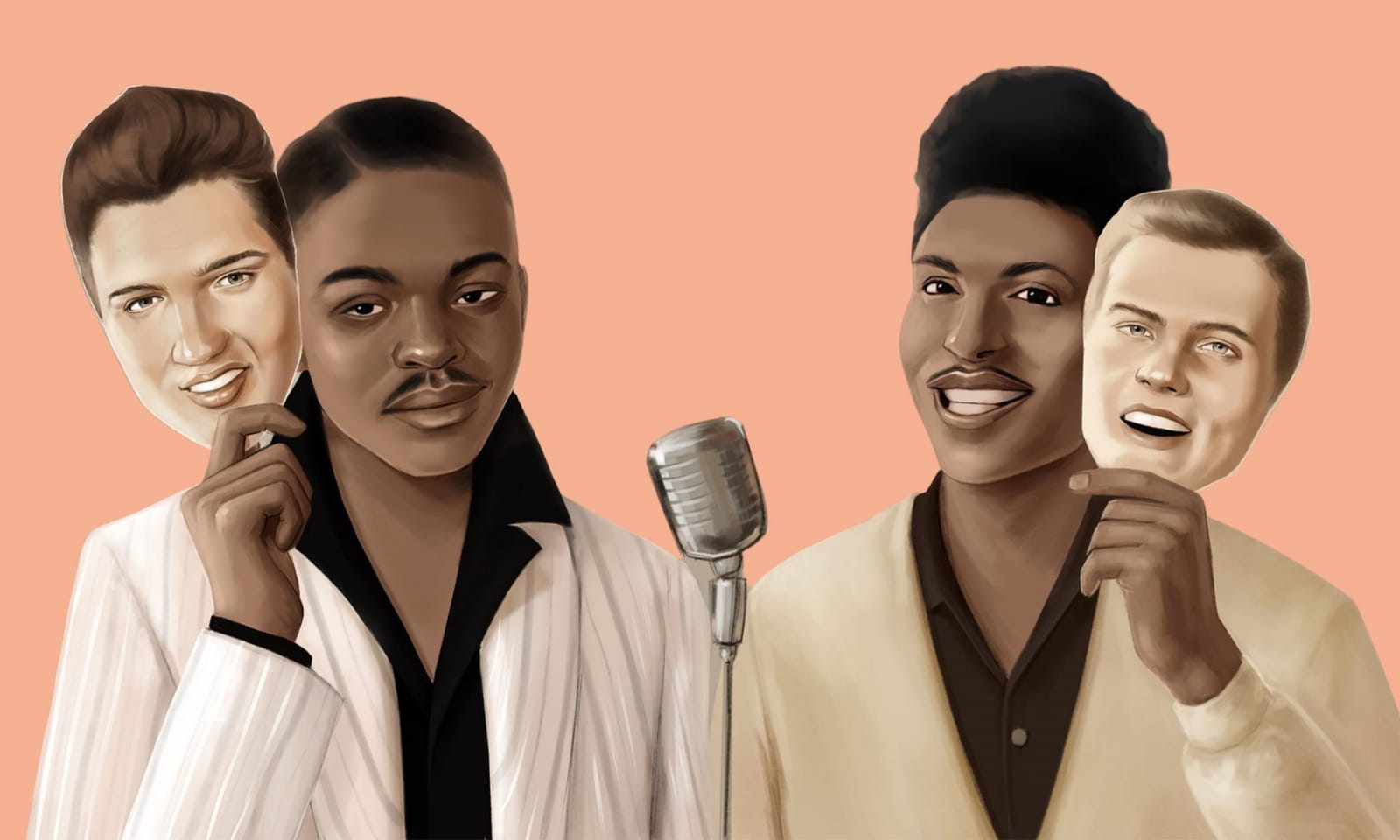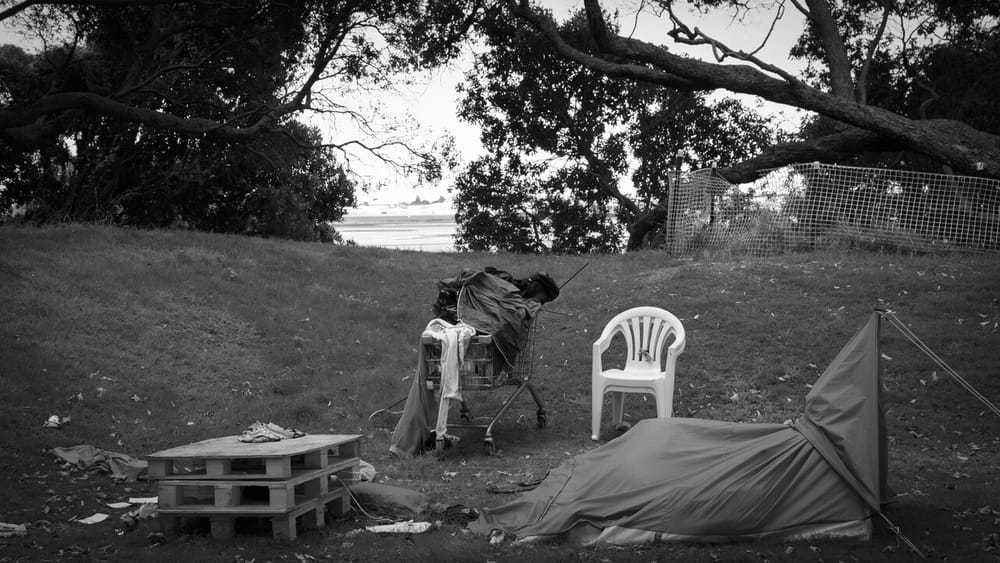It was the mid-1980s, and African American rock ‘n’ roll, R&B and blues musician and activist Daryl Davis had just finished performing a set with his band in a bar in Frederick, Maryland.
As he left the stage, a White man—who would later reveal himself to be a member of the Ku Klux Klan—went up to Davis, put his hand around his shoulder and expressed his approval and admiration for his performance. “This is the first time I heard a Black man play piano like Jerry Lee Lewis,” he told Davis after they exchanged pleasantries. Surprised with the statement, Davis quickly replied, “Well, where do you think Jerry Lee Lewis learned how to play that kind of style? . . . He learned it from the same place I did: Black blues and boogie-woogie piano players.” The White man was in disbelief and refused to accept Davis’ proposal.
Hearing about this incident on the Joe Rogan Experience podcast made me realise that I had been just as ignorant and oblivious as this man about the extent of the artistic contributions of Black people to American music. The moment also sparked within me many questions about my state of ignorance. Why did I not know about these artists? How much more did I not know? How much of the music I listened to was indeed Black?
As an Indian girl growing up in Kuwait in the 2000s, my exposure to American popular music came primarily through television channels like MTV Arabia (the Middle Eastern iteration of MTV) and MBC (Middle East Broadcasting Center) as well as the radio station Radio Kuwait FM 99.7. Hit singles from a range of American artists, including Black artists, were in heavy rotation along with other shows. My favourite was an MTV show called ‘Rewind’ which played classic pop, R&B and hip hop hits from the previous decades. Songs were played in cars and at parties and hummed in classrooms by local as well as expatriate teens of various nationalities who, like myself, were unaware of the cultural and historical backstories of the music.
For example, I heard of Elvis Presley, dubbed the “King of Rock ‘n’ Roll,” on television shows and news media due to his iconic status, but until recently, I had no idea that Presley was profoundly influenced by and “borrowed” from Black blues, gospel and rhythm ‘n’ blues artists of and before his time. He was influenced by radio performances of then local Black disc jockeys like B. B. King (who later came to be known as the “King of the Blues”) and Rufus Thomas (who also became a successful recording artist) and by performers at the Black nightclubs he visited during his teenage and young adult years.
Furthermore, I only recently learnt that many of Presley’s early recordings were covers of original songs by Black artists and that some of his biggest-selling songs like ‘Don't Be Cruel’ and ‘All Shook Up’ were penned by a Black musician by the name of Otis Blackwell. In fact, the first time I heard about it was last year in a YouTube video of a speech that Michael Jackson gave in 2002. While facts like this have now become somewhat common knowledge for most people in the West, my lack of awareness of Blackwell and others like him may be the residual effect of a time in the United States’ past when racial segregation permeated every aspect of life, including music and entertainment.
Dr Portia K. Maultsby is a renowned ethnomusicologist and professor emerita at the Department of Folklore and Ethnomusicology at Indiana University and the founder of the university’s Archives of African American Music and Culture. Maultsby took up the study of African American popular music traditions in the 1970s when there was no one looking into it as a valid area of research. She explains that segregation ensured that White Americans remained ignorant of Black musical traditions.
“Due to the segregated structure of the country for years and years, White Americans were kept away from the sounds of Black music,” Maultsby says. During this time, many Black jazz, gospel, R&B and soul artists enjoyed popularity in and even toured different parts of Europe. However, within the United States, Black artists were relegated to the so-called category of ‘race music’, an umbrella term—later replaced by ‘rhythm ‘n’ blues’ in the 1940s—used to denote essentially all types of African American music made by Black people, for Black people. The songs were distributed by mostly White-owned record labels catering exclusively to Black audiences, which meant that the White population remained largely ignorant of the large volumes of work recorded by countless Black artists. Black artists also did not get paid as much as White artists or have as many resources, and segregation ensured that their performances were limited to smaller venues.
By the early 1950s, however, a number of independent radio stations (again, mostly White-owned) began popping up, including rhythm ‘n’ blues or “Negro” radio stations. Since it was not possible to segregate radio waves, Black music became accessible to everyone and White teenagers began taking an interest in it. Seeing this, the music industry recognised the potential of appropriating Black music and record companies started making sanitised covers of the music with White artists to distribute to White listeners. But as Maultsby explains, they did so while “keeping the original artists in the background, unexposed” and rhythm ‘n’ blues music, covered and performed by White artists, was now marketed to the mainstream White listener as ‘rock ‘n’ roll,’ a term coined by radio disc jockey Alan Freed.
Record companies and White artists wanted the Black sounds and styles that appealed to the White audience but they did not want the Black artist. American record producer and founder of Sun Records Sam Phillips had been looking for “a White man with the Negro sound and the Negro feel” when he found Elvis Presley. The Beatles got their start by covering various blues artists like Arthur Alexander and rock ‘n’ roll pioneer Chuck Berry. Janis Joplin, who was dubbed the “Queen of Rock”, wanted to sound like a Black blues musician and was influenced by Lead Belly, Bessie Smith and Big Mama Thornton. Pat Boone covered ‘Tutti Frutti’, an original song by musician, singer and songwriter Little Richard, and reached 12th place in the national charts of 1956—several places ahead of the original.
Covers like these were made by record companies much to the disapproval and discontentment of the artists. Little Richard, nicknamed “The Innovator, The Originator, and The Architect of Rock ‘n’ Roll” and whose style influenced big names like the Rolling Stones, Jimi Hendrix, David Bowie, Michael Jackson and Prince, told the Washington Post in 1984 that he felt as though he was “pushed into a rhythm ‘n’ blues corner” to keep him away from the White audience. He said that “they”—who he does not name—would try to replace him with White rockstars like Elvis Presley who performed his songs on television as soon as they were released. He believed that this was because “they” didn’t want him to become a hero to White kids.
Little Richard’s statement reveals the racism and the lack of agency that Black artists suffered while under exploitative record labels. Exploitation happened to almost all artists in the music industry, but Black artists were particularly targetted as they would receive very little or nothing in royalties. Forbes reports that Specialty Records purchased ‘Tutti Frutti’ for a meagre 50 USD and gave him just 0.05 USD per record sold in royalties, while White artists received much higher rates—a discriminatory practice that was quite common in the industry. Richard, after he left the label in 1959, sued Specialty records for failing to pay him royalties.
Dr Birgitta Johnson is an associate professor of ethnomusicology in the School of Music at the University of South Carolina and teaches courses on African American sacred music, African music, hip hop, blues and world music. She explains that Black artists were not protected by copyright laws and would often have their music recorded and sold by record companies without proper contracts—in other words, their music would get stolen.
“Back in the day, there was no expectation that the Black artist could fight someone in court even though some of them did,” Johnson says. “If they didn’t have the copyright stolen from them, the record companies would own the music [instead of] the artists, and [the artists] wouldn’t know it because a lot of the time, they wouldn’t have the legal know-how to recognise what was happening in contracts. They wouldn’t get paid royalties . . . even though they were due royalties.”
While this exploitation of Black artists continued, in the late 1950s, after the development of smaller and more portable transistor radios, a wider audience of White teenagers began listening to Black radio stations. This new generation no longer had to depend on the family’s devices and gained more autonomy over what and who they listened to. “Young White people, who would become the hippies of the ‘60s, are the generation of people who started to press for their freedom . . . to [listen to] what they wanted to hear,” Johnson explains.
Listeners who heard the originals would call up the radio or go down to their local record store and ask for the originals, and record companies had to start supplying to demands to stay relevant in the market. “The covers made money but didn’t last long,” Johnson says, “because young White people no longer wanted the covers, the fake versions, the copies.”
The problem was that cover bands and artists tended to simply do whatever the producers asked them to do, which was usually to copy the original artist’s sound, style and moves, and more often than not, it made for bland and inauthentic renditions of the originals. The covers lacked the authenticity that Black artists conveyed in their performance and the young audience who had heard the authentic versions could see this. “They knew what the good music sounded like—it was almost like they understood... they may not have understood the racial dynamics of it, but they knew [the real thing from the fake],” Johnson says.
Moreover, artists who did covers were performing in styles that were foreign to them. “It was outside of their tradition; it was outside of their aesthetics; [and] they couldn’t bring the same excitement to it sometimes,” she explains. The music, performance and singing style had characteristic elements such as polyrhythms (layering of multiple rhythms), call-and-response, dance and improvisation—elements rooted in traditions that were brought to the United States by enslaved West and Central Africans between the 18th and 19th centuries. More importantly, the lyrics of songs by Black artists reflected the unique social customs, trends and living conditions of Black people, and these were not fully understood by people covering the songs. As a result, “[the covers] couldn’t compete with the real thing,” Johnson says.
Maultsby explains that due to the increasing popularity of the originals, record labels soon began recording more Black artists. However, she says, they watered down or “temper[ed] [their] heavy gospel-oriented sound” to make it more palatable for the White audience, and “one way they did [that] in the ‘50s and into the early ‘60s was to use pop production techniques” which meant a “background of strings and backup singers that sounded more White—concert-type singers—to soften the more raspier, emotional sound of the Black singer.”
By the 1980s, Black music gained exposure to an even wider international audience through television channels like MTV as well as broadcasts of live performances. Throughout the 1980s and ‘90s, collaborations between interracial duos were used as a mass-marketing strategy to increase the reach of Black artists and pop production continued to be used to “soften the Black sound.” Record companies also paired up White artists with Black producers to achieve that ever-popular Black sound.
“Thus, more White artists embodying or imitating aspects of the Black style made it acceptable and soon . . . that Black sound began to define the American sound,” Maultsby explains. However, this imitation and dilution meant that people could never experience authentic Black music.
According to Maultsby, who helped pioneer the academic study of African American popular music, the way non-African Americans experience African American music, even in the United States, is from the perspective of an outsider, and this applies to the international audience as well.
“By and large, within African American communities, music is created as a part of everyday life . . . music is a part of our lived experience,” Maultsby explains. “When that music is then taken out of that context and placed in the music industry, it becomes a commodity for mass dissemination, and it takes on a different meaning and a different function.”
She explains that the live performances of legendary artists like Aretha Franklin or James Brown were very different from the studio-recorded performances because the records were “mediated so that [they] fit a certain format that [could] appeal to a broader audience.”
“Record labels didn’t like recording performances live because they felt the audience interaction would interfere with the performance,” she says. “But that audience interaction [was] very much a part of the way Black music is created and experienced."
The writing and coverage of Black music both in and outside of the United States also did a poor job of representing its true essence. As Maultsby explains, White journalists who covered Black music would write about it from a White perspective rather than a Black one.
“A lot of misconceptions early on had to do with the music being reported by White journalists who reported through the lens of White audiences,” Maultsby says. “When journalists wrote about Black music . . . in the US—and this carried on to Europe and the rest of the world [including] Asia [and the] Middle East—they wrote about it through their observation of performances in venues with predominantly White or all-White audience, or in general, non-Black audiences . . . they did not go into the Black community to see how the music was performed and experienced.”
Writing about Black music and culture from a Eurocentric or White point of view has resulted in early Black contributions to popular music being misrepresented as well as erased from the general consciousness. Black culture was appropriated, exploited and diluted and in the process, consumers were left with watered down, commodified versions of the art that did not represent the people that were at the heart of creating it, and its after-effects have carried over to the present-day, among non-Western consumers.
Black contributions to music are also rarely discussed in mainstream media, which is largely controlled by White executives.
“The influence of Black music in a lot of American music are things that only get discussed in classes or documentaries—sometimes award shows—but mostly in formal environments, unless you’re from that tradition,” says Birgitta Johnson. “[Artists like] Steven Tyler . . . [have] said, ‘I grew up listening to the blues; I love the blues’ . . . but the people who promote him don’t really have any interest in [promoting that] narrative because it’s really about selling a personality when you think about how the music industry works.”
She explains that though most people are analytically aware that the United States is a diverse country, images that are promoted by American companies are very White-centric. What is sold to the rest of the world as “American” is usually centred around Whiteness, whether that’s through music, movies, television or other forms of entertainment.
“The outside world sees a very limited package and predominantly a White or Eurocentric image . . . people look at America and assume this is basically a White space even though we have all this diversity—we’ve always had this kind of diversity of culture,” remarks Johnson, who often does not get recognised as Black American when she travels internationally. “When I go to China, they don’t assume I’m American. When I go to Thailand, they don’t assume I’m American."
Even though a lot has changed for Black musicians and artists in the United States since its “race music” days, the impact of racism and Eurocentrism lingers on and affects the way Gen Z as well as millennials outside of the United States, like myself, understand pop music in the 21st century. Many tributes have been paid to pioneering and legendary Black artists in award shows, documentaries and biopics and their contributions have been studied academically by scholars like Maultsby and Johnson, but my awareness of Black music and culture as a non-American is not only limited by what’s been given to me in the media, but also by what’s been left out of the conversations around popular music. How do we change this?
As Maultsby expresses, it starts simply with acknowledgement—just like a symphony orchestra’s roots are acknowledged to be European no matter who performs it or how it is reinterpreted in different cultures, or how a sitar is recognised as an Indian musical instrument whether it’s played in a jazz performance or a symphony orchestra, we need to continue to learn and acknowledge the Black roots of the music even when it has a local interpretation or variation.
“We all know [the symphony orchestra] comes from Europe; there’s no question there; we don’t try to claim it as our own conception, but we do participate in that culture. That’s how we have to think about Black American culture,” she says.
We need to recognise African American music for its role in shaping Western popular music, and understand what constitutes Black musical traditions and what differentiates it from the rest of the world, rather than generalise it as merely American music. And while music may have transcended cultural and racial boundaries, transcendence should not come at the price of obscuring and erasing the source.
“It’s fine as long as we keep in mind the source of that music,” Maultsby says. “We can say it transcends race—it just shows how influential Black music has been internationally—but at the same time, we don’t need to erase the group that created the music and make Black people invisible in terms of their contributions. And that happens a lot.
“If we are not reminded that Black people are the ones that created the music you love, we question their contributions to society and to the world. We shouldn’t need to be reminded every day. It belongs in our consciousness.”







